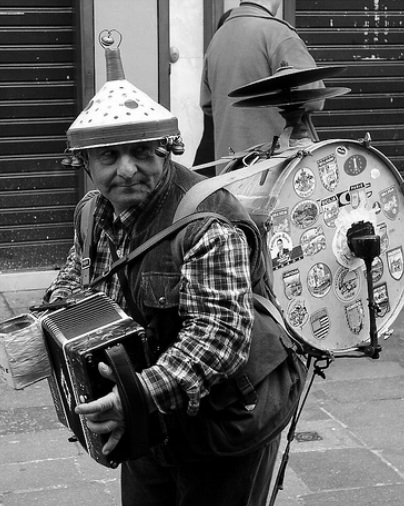

His bass and snare drumming on a version of Hank Williams’ “Jambalaya (On The Bayou)” worked a treat, and his usual vibrant guitar was supplemented by steel-guitar playing, banjo licks and some strong fiddle playing.
#One man band drummer series
McCartney’s experimental album also inspired Emitt Rhodes, of the band Merry-Go-Round, who played every single instrument and sang all of the vocal parts on three baroque pop albums released in the early 70s.Īfter leaving the hugely successful Creedence Clearwater Revival, singer and guitarist John Fogerty opted for complete control over his debut solo album, The Blue Ridge Rangers, a series of cover versions of his favorite songs.

McCartney later admitted to enjoying working as a solo artist, saying, “I only had me to ask for a decision, and I generally agreed with myself!” After its release, the album reached No.1 on the Billboard charts in America and No.2 in the UK. He said that he decided to sing and play all the instruments – acoustic and electric guitars, bass, drums, piano, organ, percussion, Mellotron and toy xylophone – because “I think I’m pretty good.” Hear: “The Sheik Of Araby” (1941) Paul McCartneyįrom one of the world’s best bands to one of the best one-man bands in the world: just before Christmas 1969, Paul McCartney, working during The Beatles’ split, began working on McCartney, his own solo album, at his home in London’s St John’s Wood.

I dreamt I was playing parts for the whole Duke Ellington band.” On April 19, 1941, Bechet played six instruments – soprano saxophone, tenor saxophone, clarinet, piano, string bass, and drums – for a recording of “The Sheik Of Araby.” He also recorded four parts for “Blues For Bechet.” Bechet later said he was in a “cold sweat” about the project, recalling, “Thinking about this session was giving me nightmares. Bechet’s daring venture came in the days before tape recording, so each effort had to be recorded on a 78rpm wax original and superimposed on to the rest. When engineer John Reid told Sidney Bechet about the possibilities of multi-tracking, the jazz maestro devised a plan to work out the individual parts on six different instruments and memorize the timing and melody of each.


 0 kommentar(er)
0 kommentar(er)
